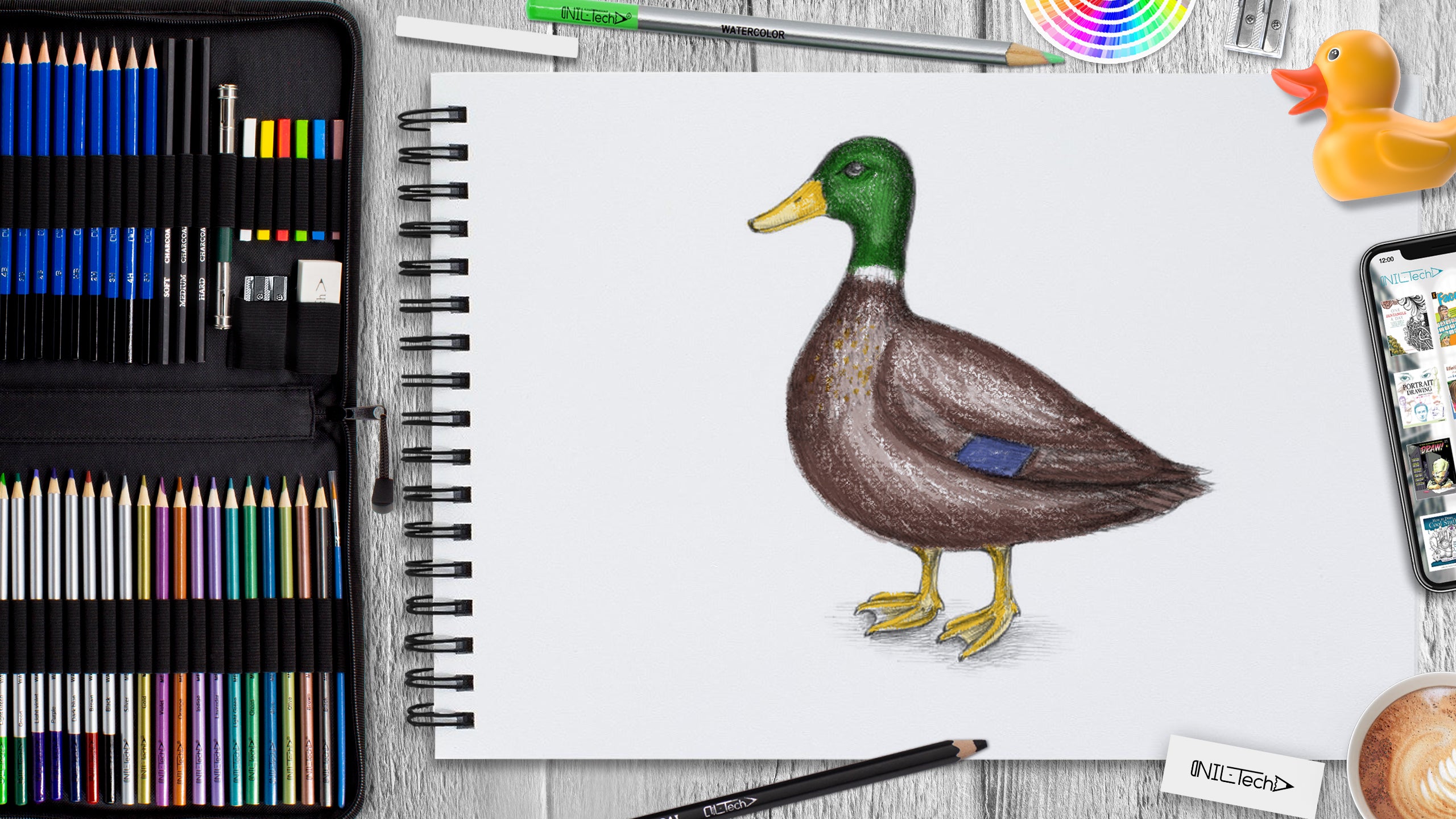
How to Draw a Duck
May 29 , 2020

Hi everybody, and welcome to a new NIL-Tech drawing tutorial: "Duck". Ducks are one of the most common birds we can see. It's not unusual to see a family of ducks at your local park. They might not be as exotic as other animals or birds, but they still have a fascinating biology. The biggest question people have regarding ducks is whether their quacks can echo or not. Yet they have many even more special qualities you would never have thought about!
Here are some interesting facts about the Ducks:
1. There are species of ducks found worldwide on every continent except Antarctica. Some duck types, such as the mallard, are discovered throughout the globe, while others have small, limited ranges.
2. All ducks have extremely waterproof feathers as a result of a detailed plume structure and a waxy coating that is spread out on each feather while preening. A duck's feathers are so waterproof that even when the duck dives underwater, its downy underlayer of feathers right alongside the skin will remain completely dry. The uropygial gland at the base of the tail produces the waxy oil that covers feathers so well, and many other birds also have the same gland.
3. Ducks are precocial, which means that ducklings are covered with down and also able to walk and leave the nest just a couple of hrs after hatching. This helps secure the young chicks from predators because they do not require to stay in the vulnerable nest area for long.
4. The majority of male ducks are silent, and only a few species actually "quack." Instead, their calls may consist of squeaks, grunts, groans, chirps, whistles, brays, and also growls. Females can also make a wide range of different noises, and also they are generally much more vocal than men.
5. Ducks have excellent vision. Because a duck's eyes located on either side of its head, they have a field of sight of virtually 340 degrees. And thanks to the eyes' shape, they can see things both near and far at the same time. To top it off, ducks have 3 eyelids and can see in color.
In this tutorial, we used the following supplies:
- HB pencil
- 3B pencil
- colored pencils
- brown(light and medium)
- green(light and medium)
- yellow
- blue
- blending stump
- White Vinyl Eraser
- Kneaded Eraser
STEPBYSTEP10
Let's draw a male Duck step by step

Step 1. Outline the rounded head, and then the beak (HB pencil). Draw the body - it's much bigger than the head and slightly reminds the drop shape.

Step 2. Draw the core line of the neck and the framework of the feet.

Step 3. Refine the contours of the head and the beak, then draw the eye and nostril. Draw the neck of the duck; the male mallards also have a slim white collar that demarcates the head from the greyish brown breast.

Step 4. Draw the mallard's feet. and outline the wing's shape.

Step 5. Divide the shape of the wing into sectors to create a set of layers. Then draw the speculum to the bottom part of the wing.

Step 6. Draw some decorative stripes to differ the pattern of the wing, yet remember to leave the upper part light and solid. There are no absolute rules on exactly how a drake's wing should like, so a creative approach is welcome.

Step 7. Hatch the drawing, darkening the bottom part of the body, the tail feathers, and also the head (HB pencil).

Step 8. Add more contrast to the illustration; the head of the mallard is the darkest area (3B pencil).

Step 9. Hatch the drawing as in the example above (colored pencils).

Step 10. Hatch a drawing with more pressure to add volume to the picture. Add shadows near the contours and add texture to the feathering (colored pencils). Use a blending tool to create a smoother transition (blending stump).

 |
Drawing Pencil SetExcellent GIFT IDEA - Non-Toxic and safe, easily portable and made with quality top-notch materials. Basic and innovative drawing supplies come together in NIL Tech set as an exceptional replacement for old-fashioned pencil boxes. The main attraction at any occasion from your drawing enthusiast friends, sketchers, artists to your kids or students boosting their creative projects and enjoy their ear-to-ear smile! |







1 Comments
Once you’re comfortable with the basic duck drawing, try adding accessories like a hat, sunglasses, or a bow tie to make your duck unique.